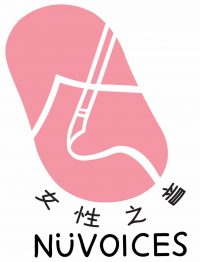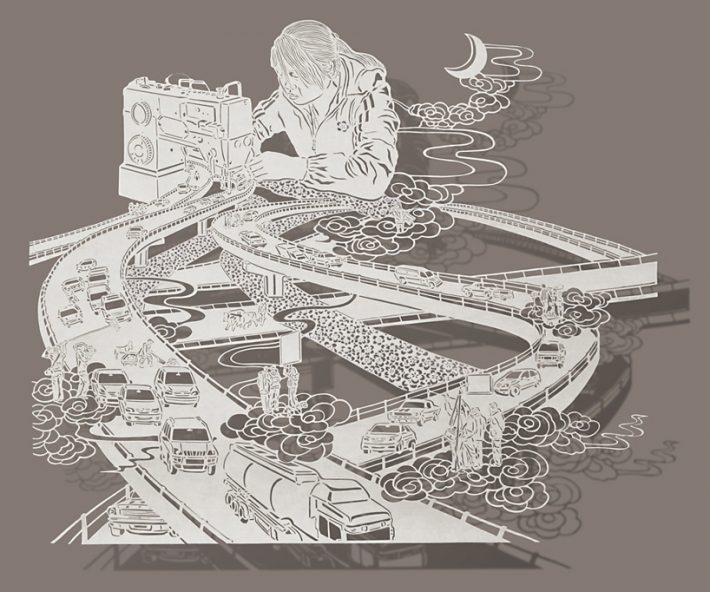BY CLARISSA TAM
As much as beauty and aesthetics are often perceived to be “the woman’s domain,” the art world has long held the bad habit of overlooking female artists. Globally, only two out of the 100 most expensive artists at auction from 2012 to 2016 were women. In Asia, the picture is no different.
At Art Basel’s annual modern and contemporary art event in Hong Kong for example, feminist activist artist group Guerrilla Girls revealed that 76 per cent of all artists shown at the fair in 2017 were men, and 37 per cent of all exhibiting galleries showed no female artists at all.
To overlook female artists is to miss out on the vital perspectives they provide on society, culture, politics…and of course, on the experience of what it is to be a woman. It is not just our biological sex, but also the social expectations and culture around us, that sculpt us into the women we become.
Here are five artworks by female Chinese artists originating from Mainland China, Hong Kong, Taiwan and Malaysia that explore the experiences that made us the way we are:
Women’s work: Bovey Lee, Sewing Highways, 2011 (above)
Originally from Hong Kong and now based in the United States, Bovey Lee creates intricate works that express her social and political views through paper cutting, a Chinese craft traditionally practiced by women. This piece, Sewing Highways, created in 2011 in response to the extraordinary pace of development in China, highlights a female laborer whose quiet industriousness has been a crucial part of the country’s progress – one so rapid that highways are seemingly being built as fast as fabric passes through a sewing machine.
Lee’s recent work explores the status of non-immigrant workers in the United States.
Website: http://www.boveylee.com
Going places: Louise Low, Lean On You And Me: Vehicle, 2014

Malaysian-Chinese artist Louise Low creates playful sculptures with bra cups that challenge taboos and preconceptions about women, including the superstition in Malaysia that displaying women’s underwear is unlucky. Her bra-covered car is especially apt, responding to the stereotype of the incompetent female driver and highlighting the huge impact that mobility has on a woman’s autonomy. She is now applying for a permit to take her bra car, officially a “decorative vehicle,” out on the road.
Apart from her bra sculptures, Low works with paint to create female portraits in camouflage, exploring the dichotomy between hiding and self-expression.
Website: https://louiselow.weebly.com
Seeing red: Phoebe Man, A Present For Her Growth 1, 1996

Women’s underwear isn’t the only feminine thing viewed as unlucky. So is menstruation, one of the most natural biological processes that holds a significantly higher “ick factor.” As if dealing with period pain wasn’t bad enough, women also have to tolerate being labeled “unclean” by certain religions because they bleed. Even today, some cultures require women to isolate themselves during their period, excluding them from work, school and social participation. In the face of such taboos, Hong Kong artist Phoebe Man’s work A Present For Her Growth, made with sanitary napkins and red-dyed eggs traditionally given out to celebrate a baby’s first birthday, is an important reminder that menstruation is a part of life, crucial for creating life as well as personal growth and something that could be embraced rather than dreaded.
Responding to #MeToo, Man’s latest exhibition “Free Colouring If I Were” invites viewers to put themselves in the shoes of victims, perpetrators and bystanders through the act of colouring.
Website: http://cyman.net
Her own fairytale: Chang En-Tzu, Perfect Imperfection – 1, 2013

Taiwanese artist Chang En-Tzu works with embroidery techniques to play with and subvert the Disney princess fairy tales that little girls everywhere have been raised on and which continue to shape their hopes and desires as adults. The choice of Snow White plays up the ideal of the pure, virginal woman waiting passively to be rescued by her Prince Charming, while the unravelling threads point to the limits where these imposed stories end and where the individual starts spinning her own fate.
Chang’s new work explores the identity politics of being a Taiwanese artist in her show “Big Brother Is Watching You.”
Website: http://changen-tzu.blogspot.hk
A Woman’s march: Luo Yang, Pi Pi (Highway), 2016

The making of a woman is never complete, but is continually shifting and evolving. Originally from China’s Liaoning Province, Chinese artist Luo Yang’s photograph series GIRLS captures young women on the cusp of adulthood in a nation coming to terms with being a global superpower. Self-assured and vulnerable at the same time, the female figure in Pi Pi (Highway) could be a guide for other women today – telling them to take risks, embrace their vulnerability, and not be afraid of attracting stares.
Yang continues her photographic odyssey of the modern Chinese woman in her latest work.
Website: http://www.luoyangphoto.com
About the author
A Hong Kong native who has lived and worked in Shanghai for the last five years, Clarissa is an art consultant working to make art more accessible and more enjoyable to the public at large. She hopes to use her background in branding and advertising to support artists and creators. She writes about art in English and Chinese on her blog clarissa-sees.com.
Website: clarissa-sees.com
LinkedIn: linkedin.com/in/clarissa-tam-7593636
Instagram: airyclairy
WeChat Public Account (Chinese): notsuiyi
About the editor
Jessie Lau is a writer, editor and researcher passionate about exploring gender, ethnicity, social policy and identity in China and other parts of Asia. Based in London and Hong Kong, she has written stories on everything from illegal housing in Hong Kong and solitary confinement in Californian prisons to China’s massive boarding school program targeting ethnic Uyghur and Tibetan children. Her writing has been published by the South China Morning Post, The Economist and Quartz, among others. She is Online Editor-in-Chief of NüStories, a feminist magazine amplifying minority voices on China, and board member at NüVoices, a global collective supporting women working on China subjects. Now pursuing a MSc in international history at the London School of Economics, she holds an LLM in international studies from Peking University and a bachelor’s degree in English from the University of California, Berkeley. Twitter @_laujessie Website: www.laujessie.com

